This All Butter Pie Crust comes together in just one minute! It is buttery, flaky, and amazingly tender. I share many tips and tricks to making it consistently perfect every time. There is no shortening!
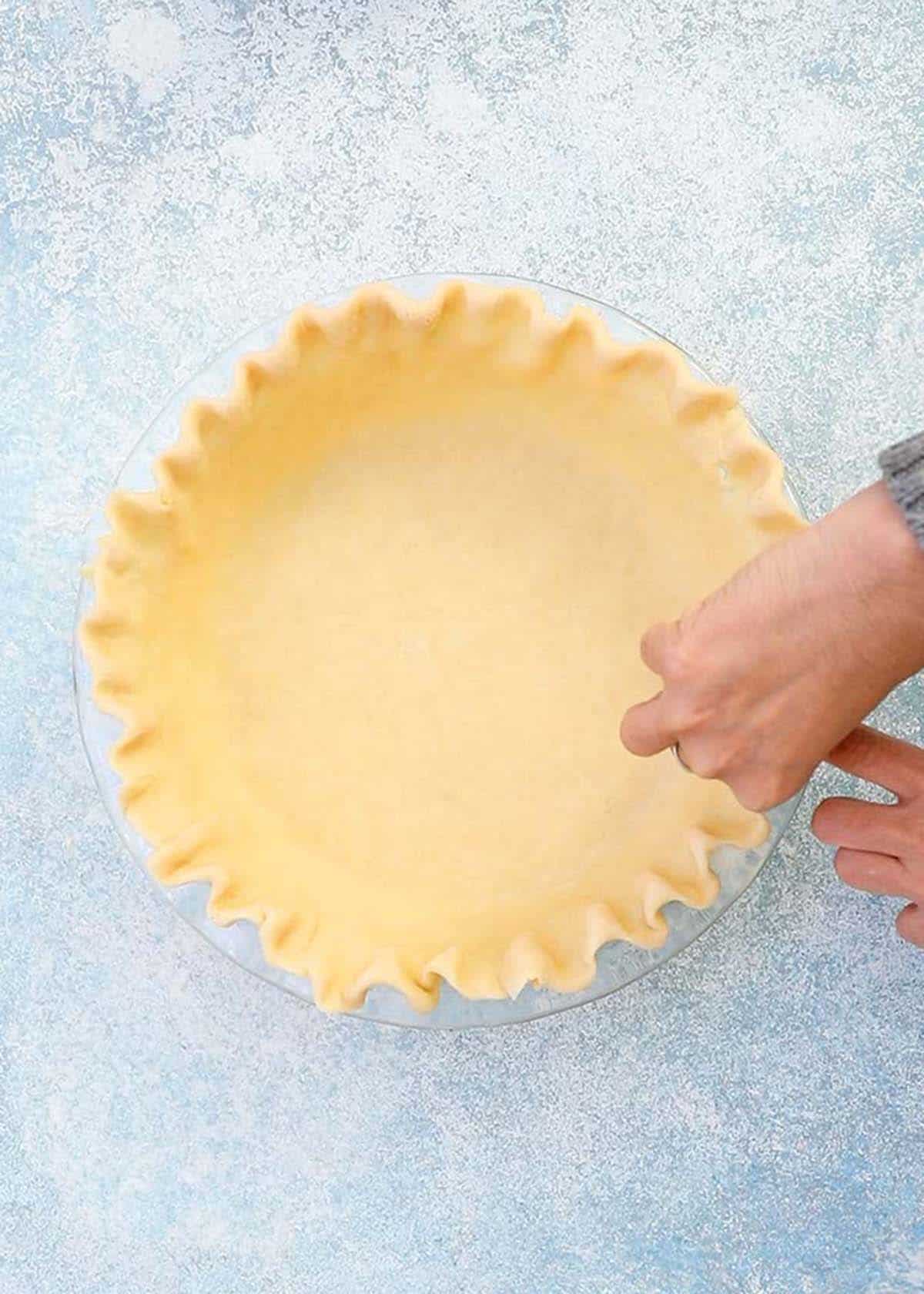
Pies are often considered time consuming and are reserved for special occasions. If you've ever found homemade pie crust intimidating, I'm here to guide you through the process with tons of tips and tricks.
This is my absolutely flaky all butter pie crust recipe and I use to make pecan pie without corn syrup, cookie pie or even these apple hand pies in an air fryer.
It’s made with just butter, no shortening! While traditionalists may advocate for shortening to achieve flakiest crust, using only butter adds a richer flavor and also enhances the filling.
Jump to:
Why this recipe works?
Using all butter creates a flaky crust thanks to the butter's water content! While the crust bakes, the butter melts, causing the layers of flour to separate, and the water transforms into steam. This process lifts the dough, resulting in flaky layers, which are the key to its fluffy texture and are also used to make these cute pie crust cookies.
Ingredients
Scroll down to the recipe card below for full information on ingredients and amounts.
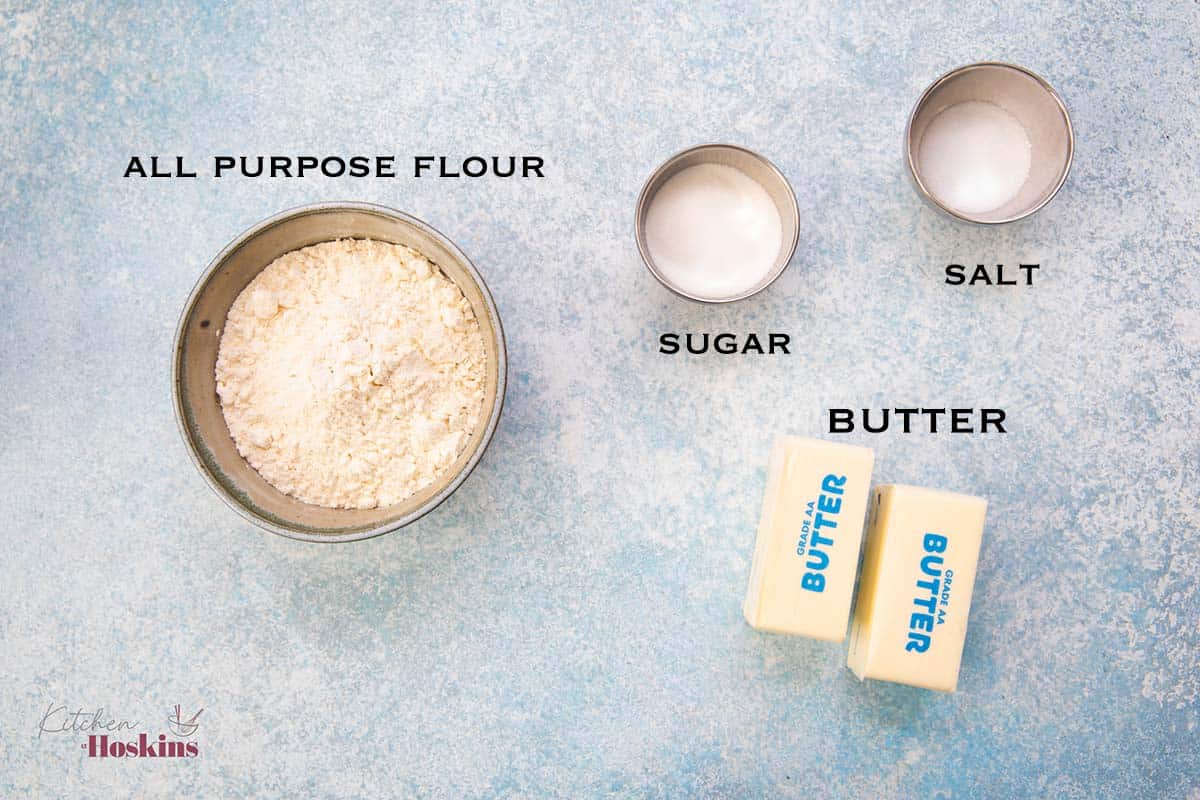
- All purpose flour - Choose a good quality flour with a higher protein. It helps the crust to be more flaky and have a good structure.
- Butter - Use very cold butter! Like for sweet potato biscuits, cold butter minimizes gluten formation, stays firmer and is less likely to stick to your hands or the rolling pin, making it easier to shape and roll out the crust.
- Salt - To enhance flavor.
- Sugar - A little sugar to all butter pie crust improves its flavor and enhances browning.
How to make?
You can find full printable recipe below, but here is a quick overview of the procedure along with step-by-step photos.
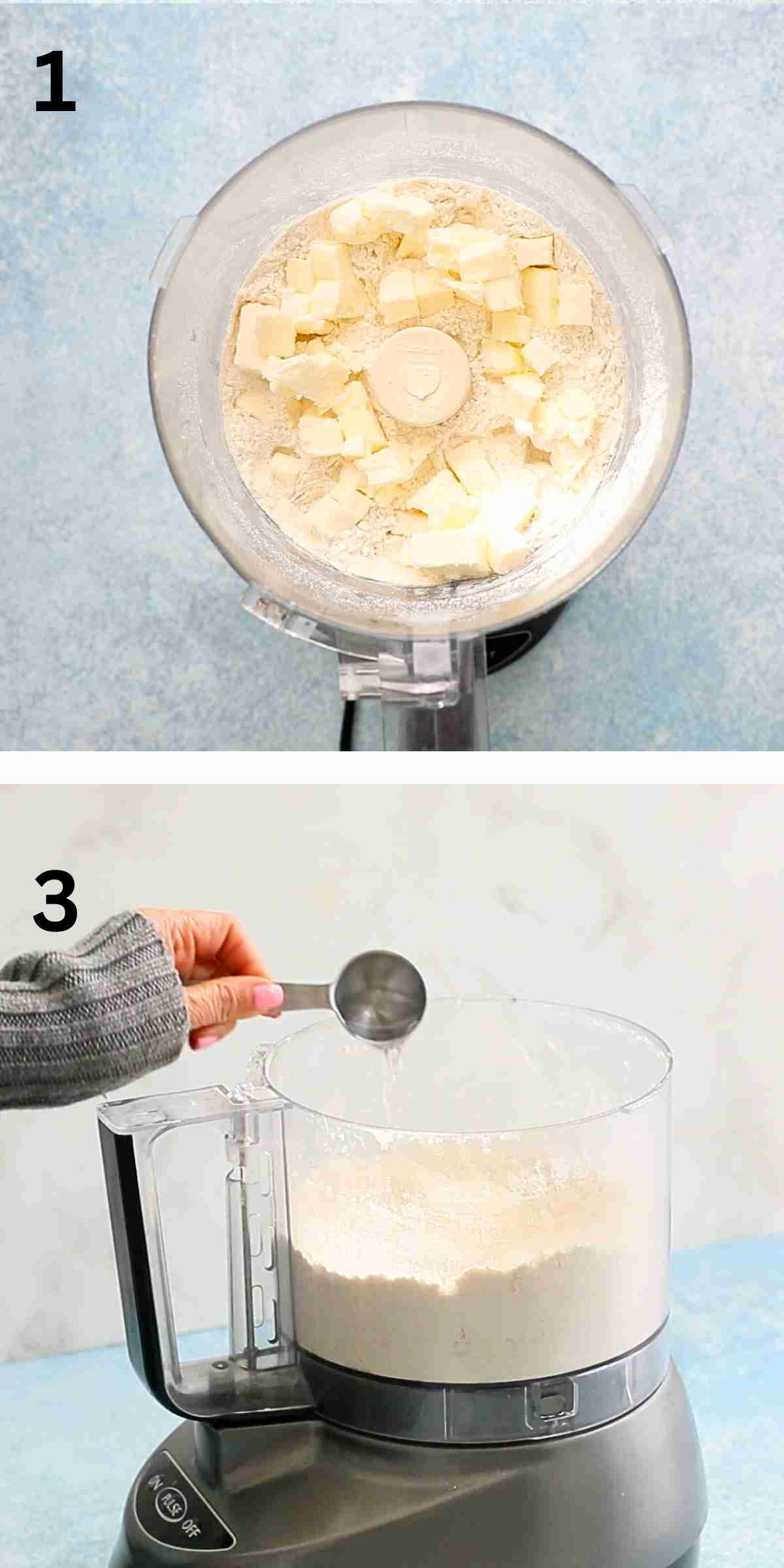
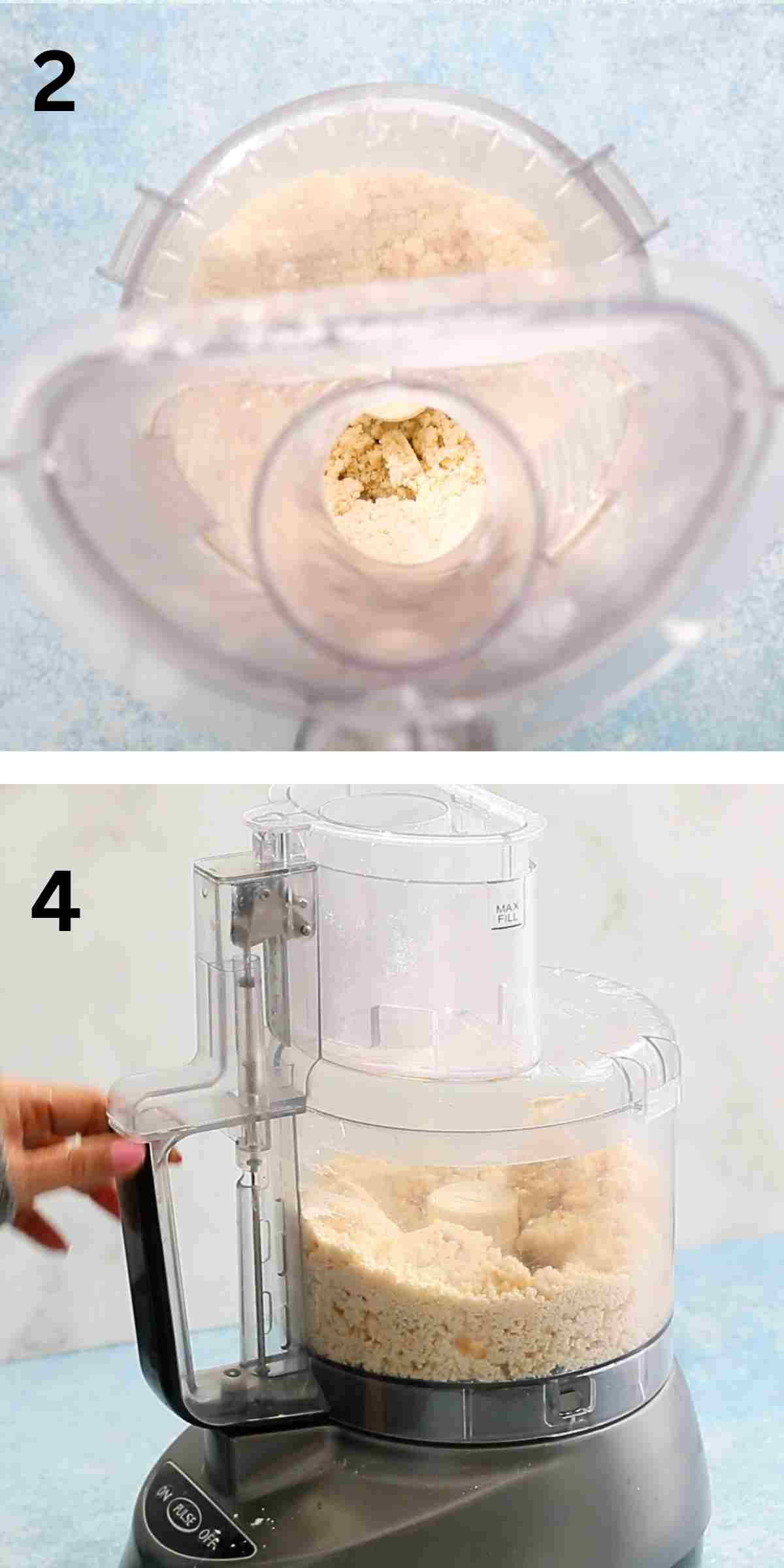
1.Add flour, sugar and salt into a food processor. Pulse twice to combine. Add the chopped butter, all over the surface.
2. Pulse 6 to 9 times, until until it resembles coarse meal.
3. Add ice cold water.
Pro tip: You will need two and a half to 3 tablespoons of cold water. Adding too much water can make the pie dough tough, while too little water results in a dry, crumbly texture when rolling and handling the dough.
4. Pulse for 9 to 13 seconds until the dough begins to form large clumps.
Tip: You want the dough to clump together but not feel sticky. Once the dough is clumping together, transfer the dough to a work surface.
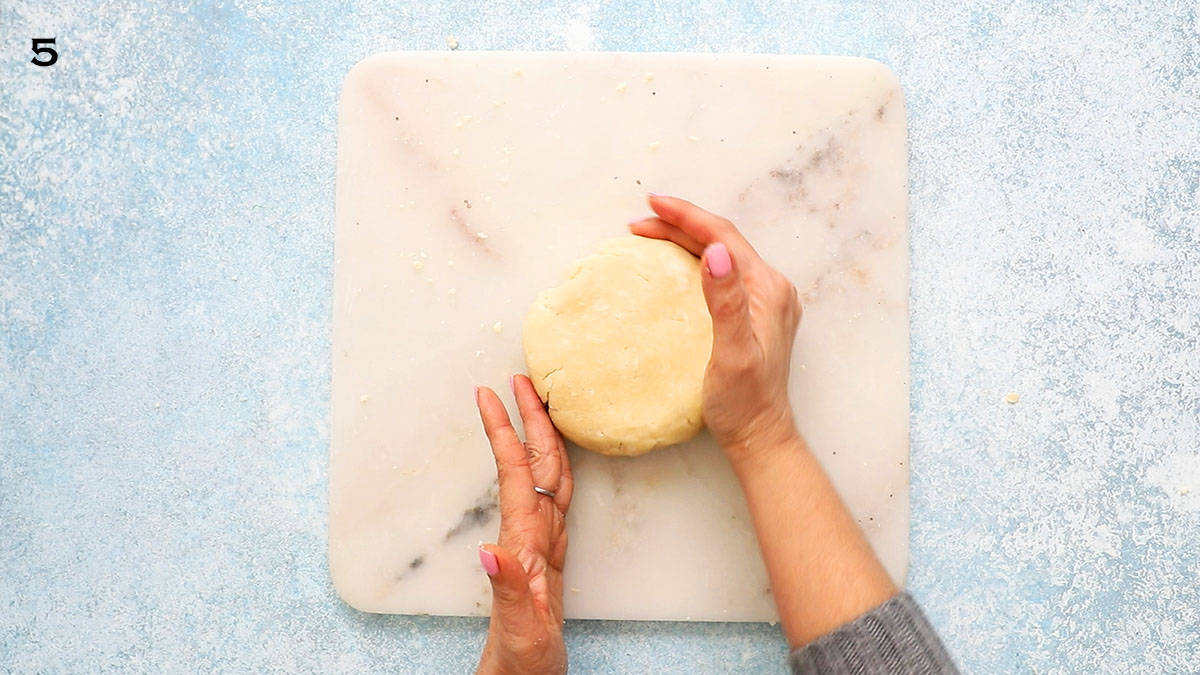
5. Transfer the pie dough to a work surface. Using hands, shape the dough into a flat disc. Avoid overworking the dough. Wrap in plastic wrap, then refrigerate for one hour or up to 2 days.
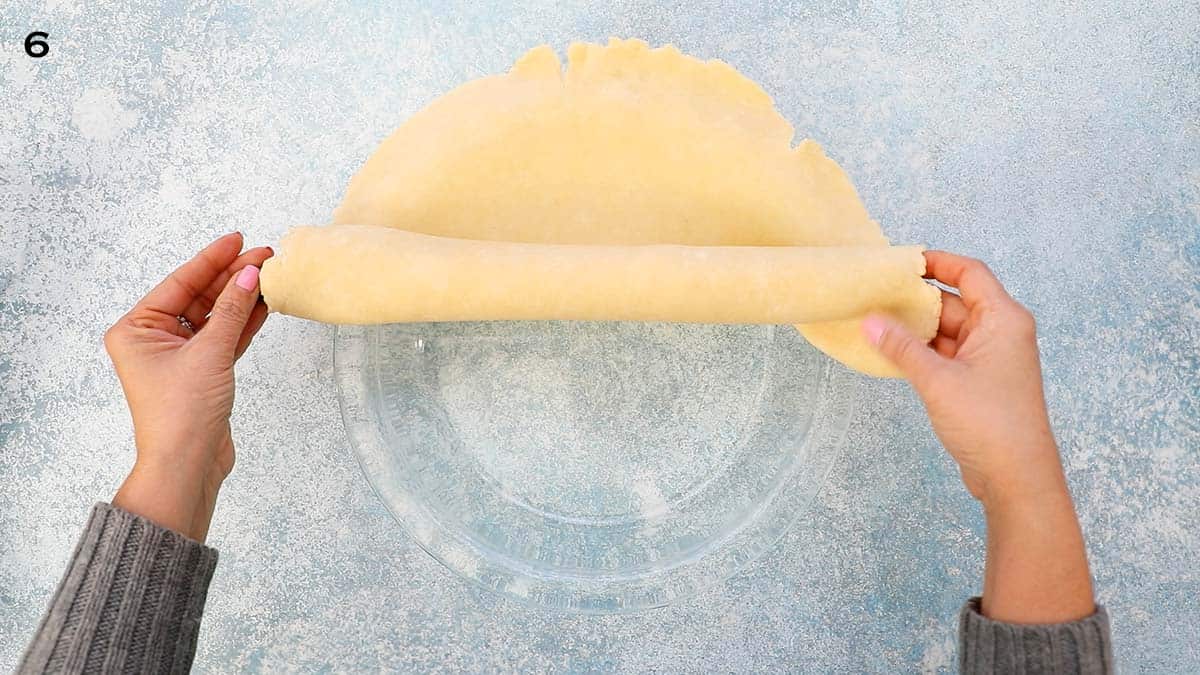
Tip: When rolling the dough out, rotate the pie crust often to make sure it’s not sticking to your work surface. Sprinkle on a little more flour if it’s sticking.
To ensure a decorative edge, roll out the all-butter pie crust to a size larger than your 9-inch pie dish, such as a thin 12-inch circle.
6. Since your dough is about ⅛-inch thick, I like to use a rolling pin to help transfer the crust to the pie dish. Carefully roll one end of the circle of dough loosely onto the rolling pin, pick it up, and carefully roll it back out over the top of the dish.
Want To Save This Recipe?
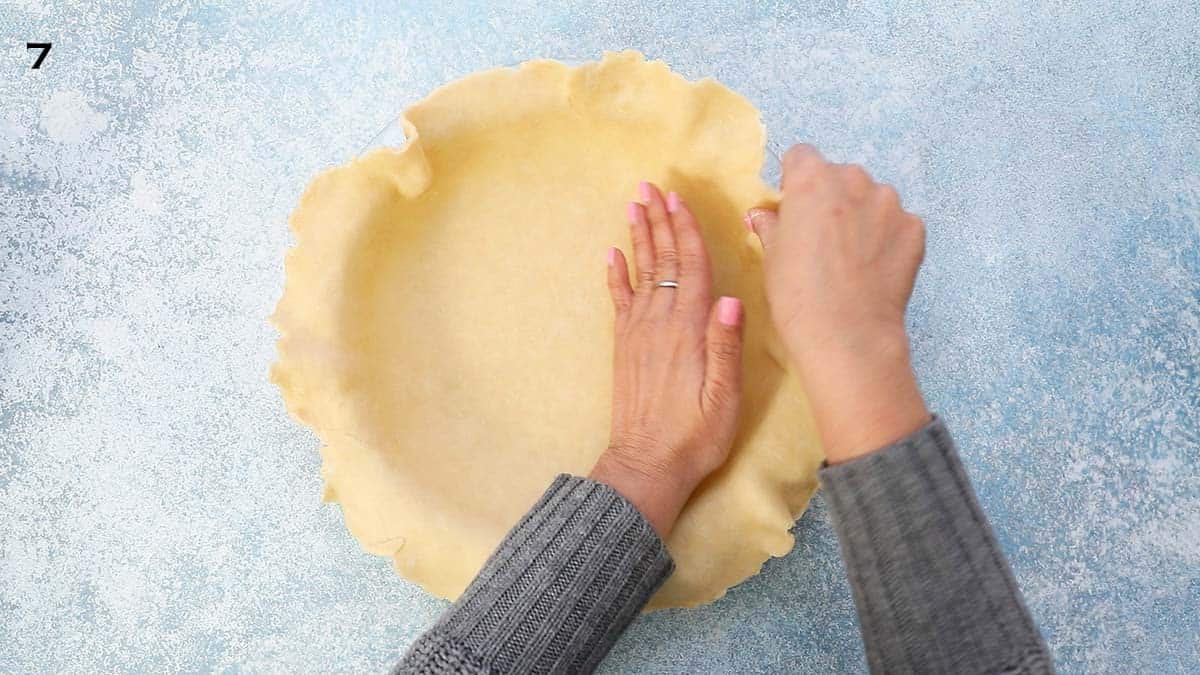
7. Drape into the pie dish, gently tucking it into the interior all the way around.
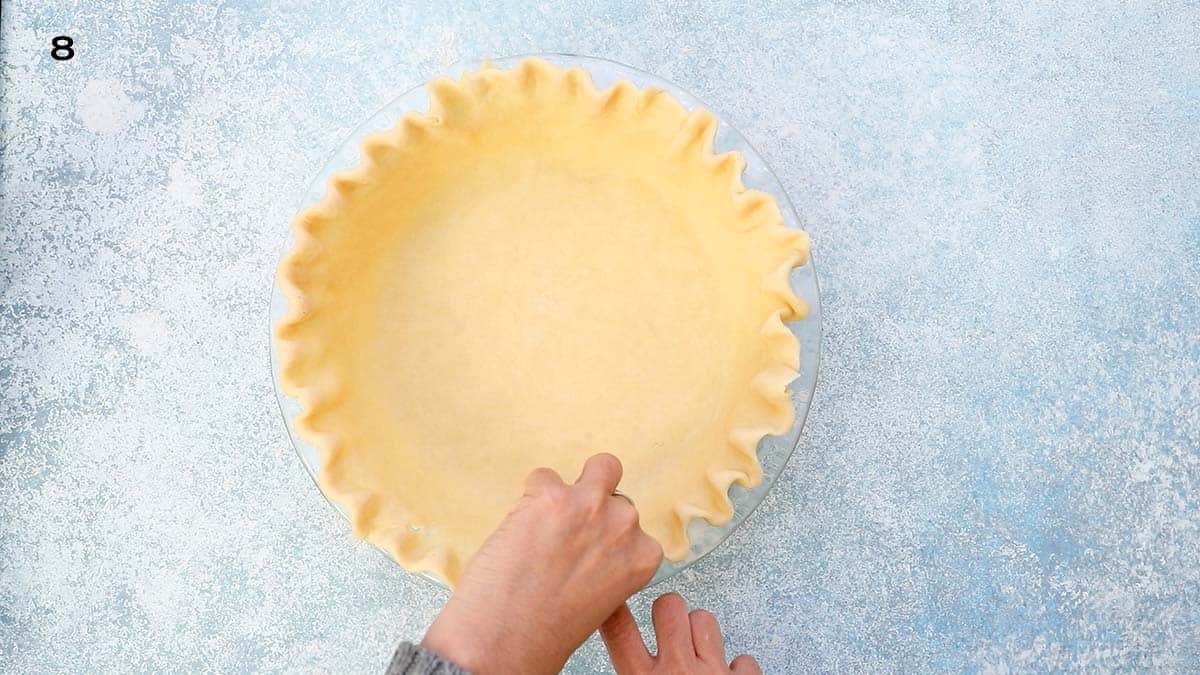
8. Trim any excess dough around the edges. To flute the edges, use a knuckle and 2 fingers to press around the edges of the pie crust, to give it a beautiful and classic scalloped look.
You can also use a fork to crimp the edges for an easier approach, like I used in the sweet potato pie.
Looking for an easy, no-fuss pie crust? You might love these no-bake mini graham cracker crust.
The secret - Keep it cold
Use cold butter and ice-cold water. Keeping your butter pie dough as cold as possible helps prevent the butter fats from melting before the crust hits the hot oven. The colder the ingredients, the crust is easier to handle without sticking. This recipe is also great to make Halloween poptarts.
Troubleshooting
- Don’t have enough pie dough: This recipe produces a single pie crust. To guarantee sufficient dough for an attractive overhang and a decorative topping, roll out your dough into a 12-inch circle, approximately ⅛ inch thick.
- Dough is falling apart & crumbling when rolling: The dough is likely crumbling because there’s not enough water. Try adding ½ to 1 teaspoon of additional water and gently work it all in.
- Pie crust is tough: It is a result of overworking the dough.
How to store?
- Refrigerator - Once you've prepared the all butter pie crust, shape it into a disc, wrap it tightly in plastic wrap and refrigerate for up to 2 days.
- Freezer - If you know you’re going to want several pies around the holidays, you can make several pie crusts in advance and freeze them. Pie crust freezes beautifully. Store the tightly wrapped discs of all butter pie dough in the freezer for up to 3 months.
- Thaw - Thaw it overnight in the refrigerator.
Helpful tips
- Use a glass pie dish - Glass dishes distribute heat evenly, ensuring that the bottom cooks thoroughly, and they provide the advantage of allowing you to easily see when the sides and bottom of the crust have turned a golden brown.
- Keep it cold - Keep all the ingredients cold. A warm crust is challenging to handle, as it tends to stick and requires more flour for rolling, resulting in a tougher crust.
- Roll into ⅛-inch thickness or 12-inch circle - This provides ample dough to create an attractive border for the all butter pie crust.
Recipe FAQs
To maintain the dough's cold temperature, use ice-cold water and butter straight from the fridge. For the ice water, fill a glass with water and add ice, using approximately 3 tablespoons for the all butter pie crust recipe. It's also crucial to chill the pie dough for a minimum of 2 hours before rolling it out.
To make the all butter pie crust by hand:
1. Whisk flour, sugar, and salt in a large bowl.
2. Rub the cubed butter into the flour with the tips of your fingers until it resembles crumbs.
Mix cold water with a wooden spoon, transfer it to a work surface, shape it into a disc, and chill.
To prevent a pie crust from shrinking during baking, follow these tips:
1. Make sure the dough is thoroughly chilled before rolling it out and fitting it into the pie dish, as this relaxes the gluten in the dough and minimizes unwanted shrinkage.
2. If blind baking, use a fork to prick the bottom of the crust. This helps release steam and prevents the crust from puffing up.
3. When transferring the dough to the pie dish, gently lift and ease into the dish, allowing it to settle naturally.
4. After you've shaped the crust in the pie dish, place it back in the refrigerator until you make the filling. This extra chill helps maintain the shape.
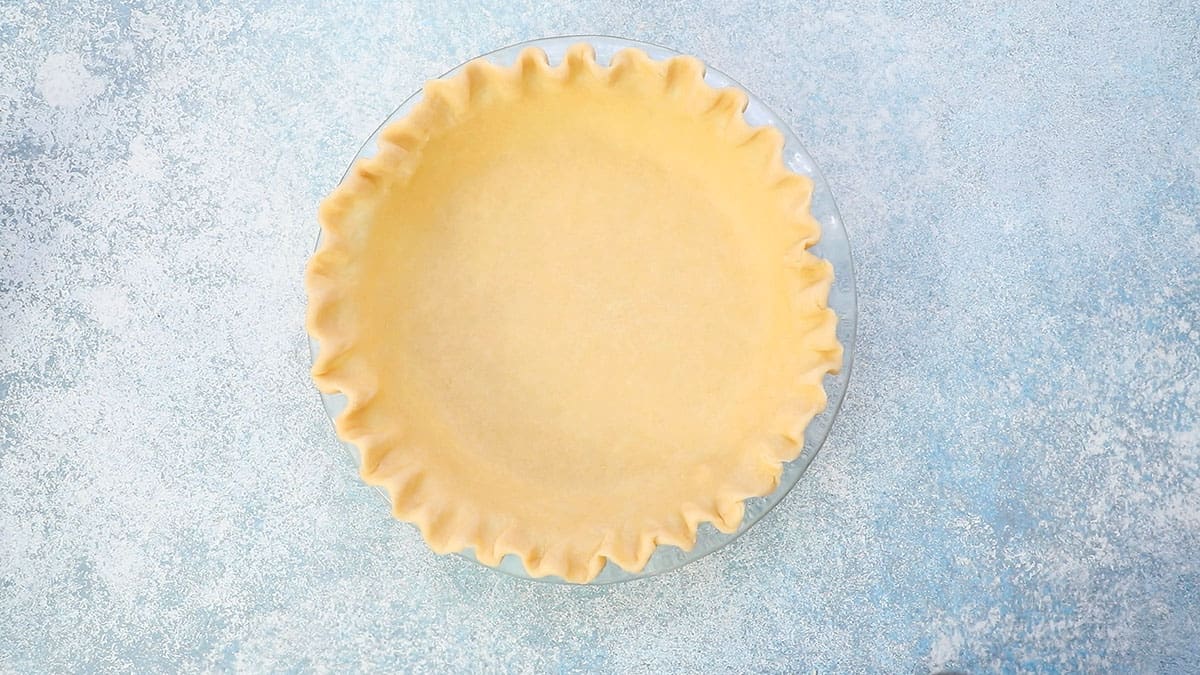
More desserts
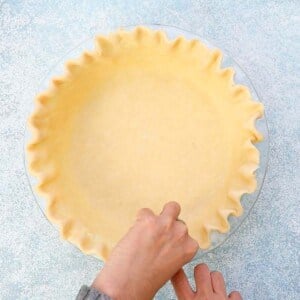
All Butter Pie Crust
Equipment
Ingredients
- 1 ¼ cups all purpose flour
- ½ tablespoon white granulated sugar
- ½ teaspoon salt
- 8 tablespoons cold unsalted butter, cut into small cubes (1 stick or ½ cup)
- 2 ½ tablespoons ice cold water
Instructions
- Add flour, sugar and salt into a food processor. Pulse twice to combine.
- Add the chopped butter, all over the surface. Pulse 6 to 9 times, until until it resembles coarse meal.
- Add the ice cold water, pulse for 9 to 13 seconds until the dough begins to form large clumps. Tip: You will need two and a half to 3 tablespoons of cold water. Adding too much water can make the pie dough tough, while too little water results in a dry, crumbly texture when rolling and handling the dough.
- Transfer the pie dough to a work surface. Using hands, shape the dough into a flat disc. Wrap in plastic wrap, then refrigerate for one hour or up to 2 days.
- Before rolling, remove the dough from the fridge and leave it on the counter for 20 to 30 minutes.
- Dust the work surface lightly with flour and also dust the rolling pin. Roll into ⅛-inch thickness or 12-inches. Tip: When rolling the dough out, rotate the pie crust often to make sure it’s not sticking to your work surface. Sprinkle on a little more flour if it’s sticking.
- Use a rolling pin to help transfer the crust to the pie dish. Carefully roll one end of the circle of dough loosely onto the rolling pin, pick it up, and carefully roll it back out over the top of the dish. Drape into the pie dish, gently tucking it into the interior all the way around.
- Trim any excess dough around the edges. To flute the edges, use a knuckle and 2 fingers to press around the edges of the pie crust, to give it a beautiful and classic scalloped look.You can also use a fork to crimp the edges for an easier approach.
- Chill and use to make your favorite pies.
Notes
Nutrition
Nutritional information, based on third-party calculations, should be seen as estimates, not guarantees, as various factors like product types, brands, processing methods, and more can alter the nutritional content in recipes.
Did you make this recipe? I’d love your feedback! Please let me know by leaving a comment, a star rating or review below.
All contents and images are my original work, unless and otherwise mentioned. Please do not use my recipes or images without linking back to www.kitchenathoskins.com. If you wish to republish a recipe, please rewrite in your own words and don’t forget to include a link back to the original recipe.
Some of the links above are affiliate links, which pay me a small commission for my referral at no extra cost to you! I am a participant in the Amazon Services LLC Associates Program, an affiliate advertising program designed to provide a means for us to earn fees by linking to Amazon.com and affiliated sites. Thank you for supporting kitchenathoskins.com.


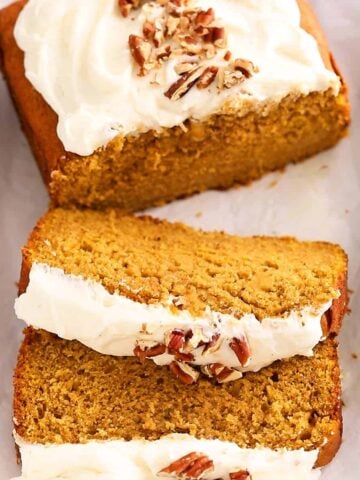
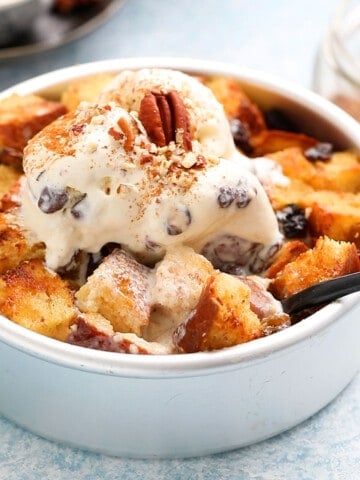
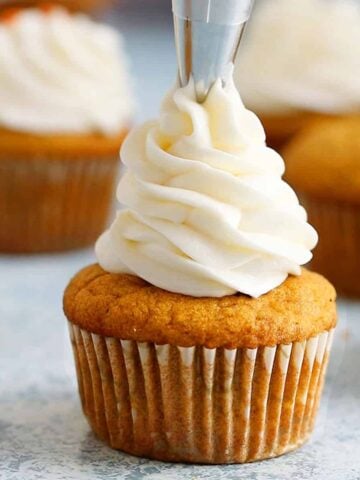
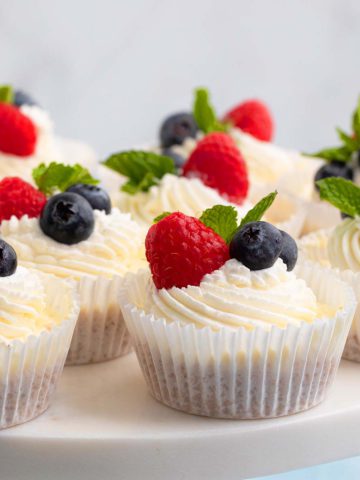
Brittania
Great recipe but where are the baking directions? Temp?
Maria Doss
Hi Brittania, This pie crust is used as the base for various pies. There is no specific baking temperature listed for the crust, because the temperature and baking time will depend on the particular pie recipe you're making. Here are the baking times and temperature for few different recipes - Apple hand pie, pecan pie, persimmon galette and so on. Hope it helps - Maria